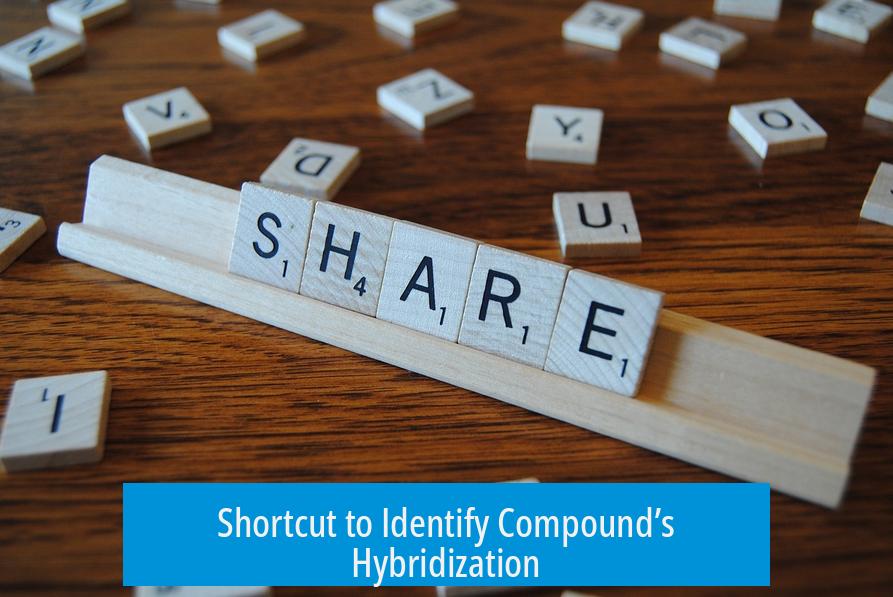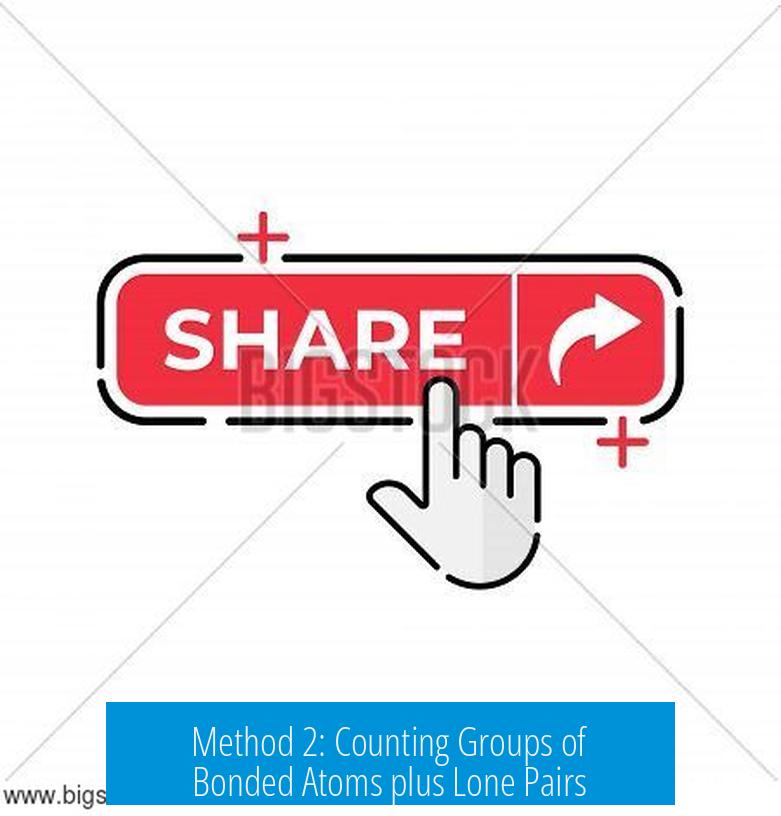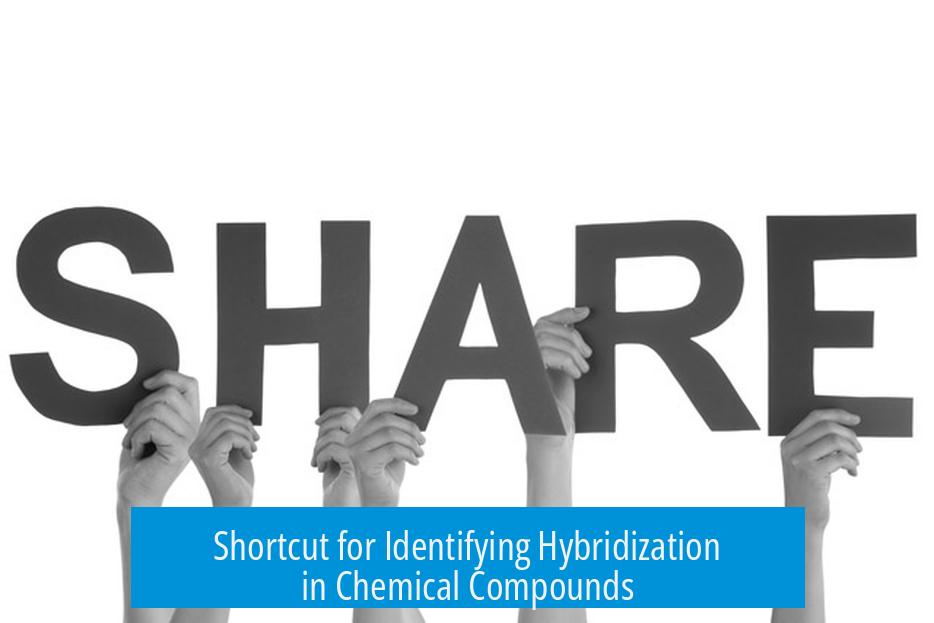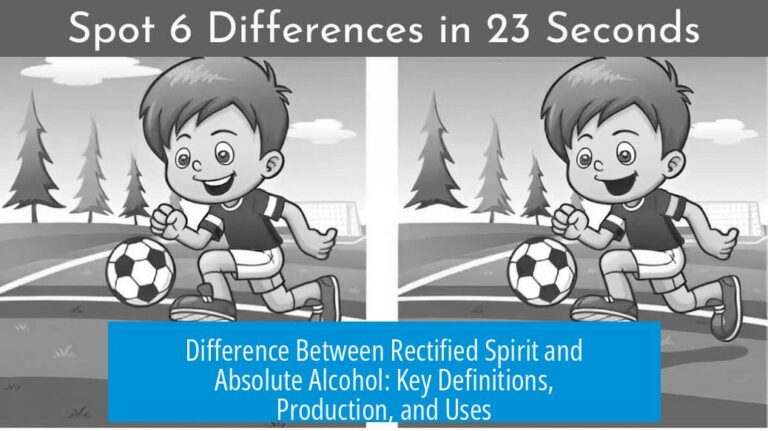Shortcut to Identify Compound’s Hybridization

The quickest way to identify an atom’s hybridization involves counting the total number of electron groups around it—these include both bonds (single, double, or triple count as one group) and lone pairs—then assigning hybridization based on that count. For most atoms, 2 groups mean sp, 3 groups sp2, and 4 groups sp3.
General Approach to Hybridization
Hybridization theory simplifies the description of bonding orbitals in molecules. Although not entirely accurate, especially for advanced chemistry, it works well in introductory contexts. The best way to learn is consistent practice, not mere memorization. Analyzing every atom in each drawn structure improves both accuracy and speed.
Many educators emphasize repetition. For example, working repeatedly with hybridization identification makes the process almost automatic. Resources like Khan Academy’s Chemical Bonds unit can help visualize and reinforce concepts by pausing and drawing structures along with the instructor.
Counting Electron Groups to Determine Hybridization
Two main counting strategies prevail:
Method 1: Counting Bonds and Lone Pairs as s and p Orbitals
- Count one bond or lone pair as an “s” orbital.
- Count any additional bonds or lone pairs as “p” orbitals.
- Double or triple bonds count as one bond only.
Example: In H3C-(C=O)-CH3, the central carbon forms four bonds. The double bond counts as one group. So the hybridization is sp2 (s,p,p).
Method 2: Counting Groups of Bonded Atoms plus Lone Pairs

This more straightforward approach counts electron groups including lone pairs:
| Electron Groups | Hybridization |
|---|---|
| 2 (atoms + lone pairs) | sp |
| 3 (atoms + lone pairs) | sp2 |
| 4 (atoms + lone pairs) | sp3 |
Groups include any bonded atoms and lone pairs. Double or triple bonds count as single groups regardless of bond order.
Rules Based on Bond Types and Environment
- Single bonds often indicate sp3 hybridization.
- Double bonds point to sp2 hybridization.
- Triple bonds suggest sp hybridization.
However, formal charge and resonance also influence hybridization. For example, a carbon atom with a formal positive charge involved in resonance is usually sp2 hybridized even if bonded to single atoms.
Lone pairs count as electron groups just as bonds do:
- sp3 includes four electron groups, which might be 3 bonds + 1 lone pair.
- sp2 corresponds to three groups (bonds and lone pairs combined).
- sp usually involves two groups, which may be a triple bond with or without lone pairs.
Exceptions and Special Cases
The standard shortcut works well in most situations. Yet, molecules like allenes and ketenes defy simple hybridization rules due to their unique bonding and geometry.
In ambiguous cases, consider resonance structures, formal charges, and molecular geometry to refine your hybridization assignment.
Summary Table of the Shortcut
| Number of Electron Groups (bonded atoms + lone pairs) | Hybridization |
|---|---|
| 2 | sp |
| 3 | sp2 |
| 4 | sp3 |
Remember, count double and triple bonds as one group each. Adjust for resonance and formal charges by generally favoring sp2 for carbons with positive charges or conjugation.
Key Takeaways
- Count total electron groups (bonds + lone pairs) around the atom.
- Assign sp (2 groups), sp2 (3 groups), or sp3 (4 groups) accordingly.
- Double and triple bonds count as one group, regardless of bond order.
- Consider resonance and formal charges which often lead to sp2 hybridization.
- Practice regularly to improve speed and accuracy rather than relying on memorized shortcuts.
Q1: What is the simplest method to quickly determine an atom’s hybridization?
Count the total number of electron groups around the atom. Electron groups include bonded atoms and lone pairs. Two groups mean sp, three groups sp2, and four groups sp3.
Q2: How do double and triple bonds affect the hybridization count?
Count each multiple bond as one electron group. For example, a double bond counts as one group, not two. This keeps the hybridization calculation straightforward.
Q3: Can lone pairs influence hybridization?
Yes. Lone pairs count as electron groups just like bonded atoms. For instance, an atom with two bonds and one lone pair has three groups, so it is sp2 hybridized.
Q4: Are there exceptions to the simple counting rules for hybridization?
Some molecules like allenes and ketenes do not fit the basic rules. In such cases, the hybridization depends on the specific bonding and structure.
Q5: What role does practice play in mastering hybridization identification?
Practice improves speed more than memorization. Repeatedly identifying hybridization in all atoms of every molecule you draw helps make the process automatic.
Q6: How does resonance affect hybridization, especially for carbons with formal charges?
Carbons with formal positive charges and resonance are usually sp2 hybridized. Resonance stabilizes the structure and influences hybridization beyond simple bond counts.





Leave a Comment